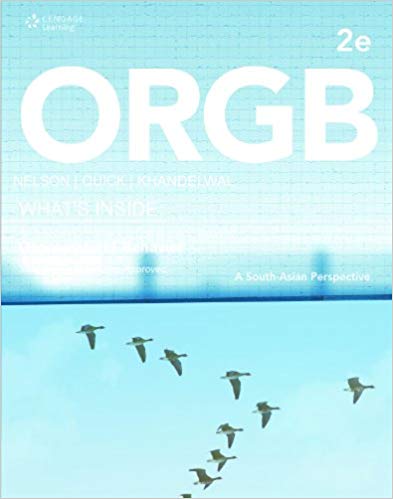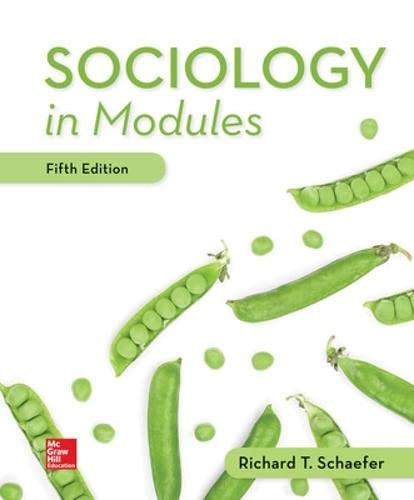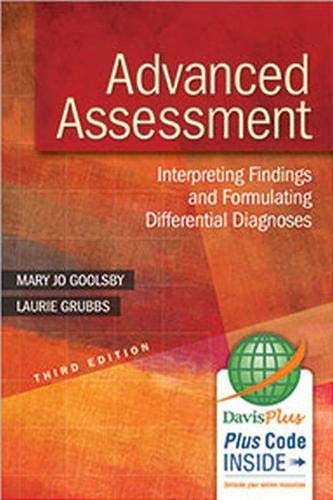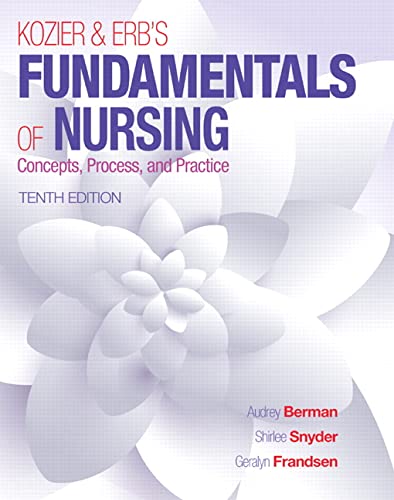ORGB 2nd Edition By Debra Nelson – Test Bank
CHAPTER 5—MOTIVATION AT WORK
MULTIPLE CHOICE
1.The process of arousing and sustaining goal-directed behavior is called:
|
a. |
energizing |
|
b. |
goal setting |
|
c. |
motivation |
|
d. |
expectancy theory |
ANS: C PTS: 1 DIF: Easy REF: p. 73
OBJ: 1 NAT: AACSB Reflective Thinking | Motivation Concepts
TOP: Motivation and Work Behavior MSC: K&C
2.According to the Protestant ethic, a person should work hard because hard work and prosperity would lead to a place in heaven. The organizational scholar who advanced the Protestant Ethic notion was:
|
a. |
John Calvin |
|
b. |
Sigmund Freud |
|
c. |
Adam Smith |
|
d. |
Max Weber |
ANS: D PTS: 1 DIF: Easy REF: p. 73
OBJ: 1 NAT: AACSB Reflective Thinking | Motivation Concepts
TOP: Motivation and Work Behavior MSC: K&C
3.Which of the following statements is most accurate regarding the current state of motivation theories?
|
a. |
The reinforcement approach to motivation has been found to be superior to other motivational models. |
|
b. |
Freud’s psychodynamic theory of motivation has generally been supported with the strongest empirical evidence. |
|
c. |
There are several approaches to motivation, and one or another may be useful in specific organizational contexts, with specific individuals or groups, at different times. |
|
d. |
The motivational models that make strong economic assumptions regarding human motivation have received the most universal acceptance. |
ANS: C PTS: 1 DIF: Moderate REF: p. 73-74
OBJ: 1 NAT: AACSB Reflective Thinking | Motivation Concepts
TOP: Motivation and Work Behavior MSC: S&E
4.Frederick Taylor’s scientific management advanced the idea that:
|
a. |
unfulfilled needs acted as motivation |
|
b. |
the relationship of management and labor should be one of cooperation rather than conflict |
|
c. |
money was not a motivator |
|
d. |
self-interest and economic gain are motivators for the owners of production and not the employees of owners |
ANS: B PTS: 1 DIF: Moderate REF: p. 74
OBJ: 1 NAT: AACSB Reflective Thinking | Motivation Concepts
TOP: Motivation and Work Behavior MSC: K&C
5.The basic motivational assumption within Taylor’s scientific management is the same as within Adam Smith’s political economic notions which is:
|
a. |
both intrinsic and extrinsic factors influence motivation |
|
b. |
ungratified needs motivate behavior |
|
c. |
individuals are largely motivated by power, affiliation, and achievement |
|
d. |
people are motivated by self-interest and economic gain |
ANS: D PTS: 1 DIF: Easy REF: p. 74-75
OBJ: 1 NAT: AACSB Reflective Thinking | Motivation Concepts
TOP: Motivation and Work Behavior MSC: K&C
6.Adam Smith formulated the “invisible hand” and the free market to explain the motivation for individual behavior. The “invisible hand” refers to:
|
a. |
psychological determinants of behavior |
|
b. |
unconscious motives |
|
c. |
internal needs |
|
d. |
unseen forces of a free market system |
ANS: D PTS: 1 DIF: Easy REF: p. 74
OBJ: 1 NAT: AACSB Reflective Thinking | Motivation Concepts
TOP: Motivation and Work Behavior MSC: K&C
7.Modern management practices such as employee management recognition programs, flexible benefit packages, and stock ownership plans emphasize:
|
a. |
internal needs |
|
b. |
intrinsic motivation |
|
c. |
external incentives |
|
d. |
psychodynamic theory |
ANS: C PTS: 1 DIF: Moderate REF: p. 74-75
OBJ: 1 NAT: AACSB Reflective Thinking | Motivation Concepts
TOP: Motivation and Work Behavior MSC: K&C
8.An approach to employee motivation that considers both psychological needs and external incentives is:
|
a. |
psychodynamic theory |
|
b. |
McGregor’s Theory X and Theory Y |
|
c. |
psychological ownership |
|
d. |
organizational citizenship behavior |
ANS: C PTS: 1 DIF: Moderate REF: p. 75
OBJ: 1 NAT: AACSB Reflective Thinking | Motivation Concepts
TOP: Motivation and Work Behavior MSC: K&C
9.Maslow’s hierarchy of needs model begins with _____ needs and ends with _____ needs.
|
a. |
security, social |
|
b. |
achievement, power |
|
c. |
power, affiliation |
|
d. |
physiological, self-actualization |
ANS: D
See also Figure 5.1.
PTS: 1 DIF: Moderate REF: p. 75 OBJ: 2
NAT: AACSB Reflective Thinking | Motivation Concepts TOP: Maslow’s Need Hierarchy
MSC: K&C
10.Assume you own and operate a small printing and specialty advertising business that employs 25 persons. With increased health care costs and related insurance premiums you are contemplating the cancellation of health and hospitalization insurance for your employees. Your decision may cause your employees to become greatly concerned about:
|
a. |
self-esteem needs |
|
b. |
affiliation needs |
|
c. |
safety and security needs |
|
d. |
self-actualization needs |
ANS: C
See also Figure 5.1.
PTS: 1 DIF: Moderate REF: p. 75 OBJ: 2
NAT: AACSB Analytic | Motivation Concepts TOP: Maslow’s Need Hierarchy
MSC: appl.
11.Alderfer’s growth need category corresponds to Maslow’s:
|
a. |
interpersonal esteem needs |
|
b. |
safety and security needs |
|
c. |
social needs |
|
d. |
self-esteem and self-actualization needs |
ANS: D PTS: 1 DIF: Moderate REF: p. 76
OBJ: 2 NAT: AACSB Reflective Thinking | Motivation Concepts
TOP: Maslow’s Need Hierarchy MSC: K&C














Reviews
There are no reviews yet.